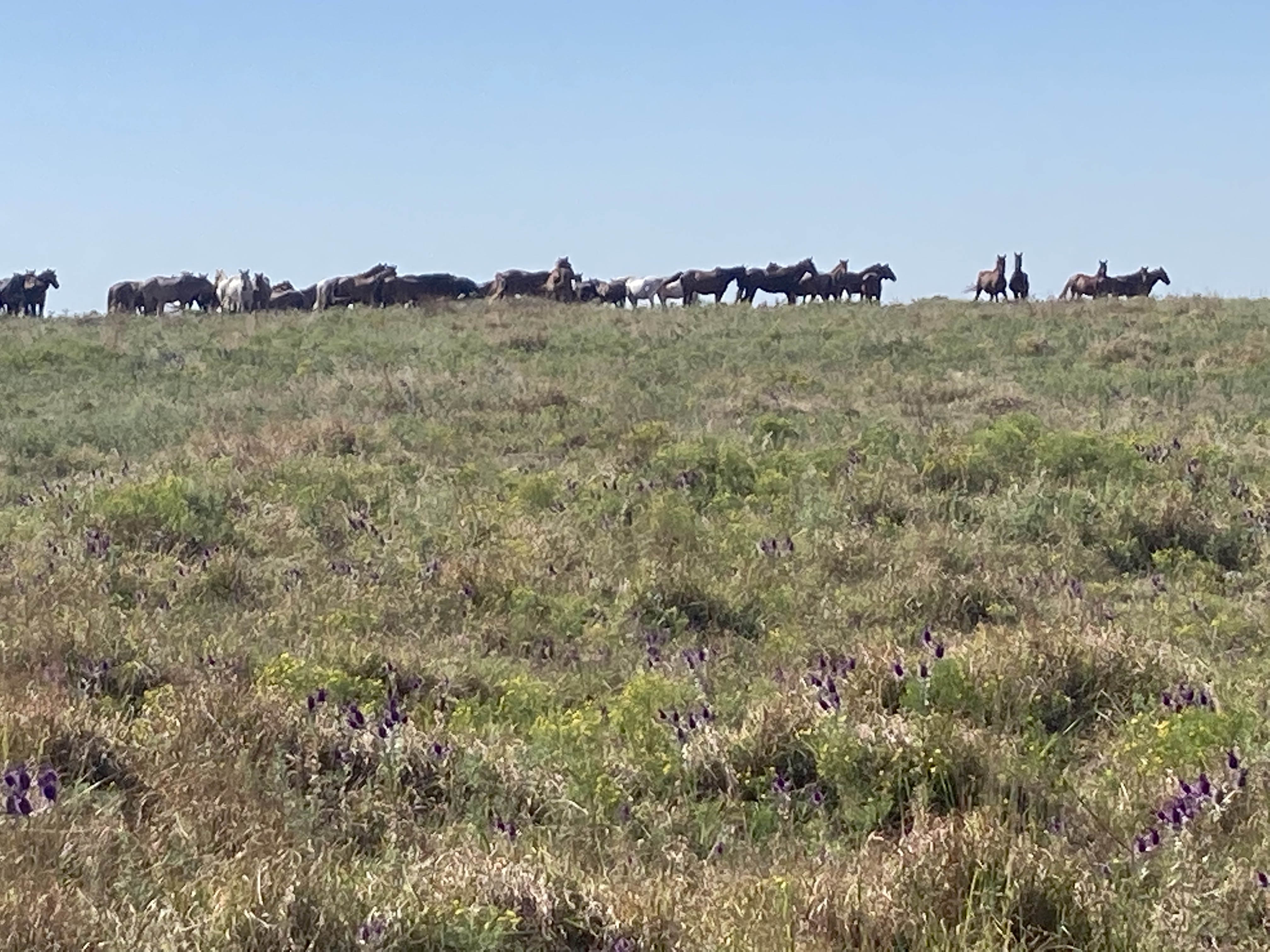Wild Horses
Contact
University of Arkansas System Division of Agriculture
Cooperative Extension Service
2301 S. University Ave.
Little Rock, AR 72204

Wild Horses
Last week I took advantage of an opportunity to drive through the Flint Hills of southern Kansas and North-central Oklahoma. As a child of the plains, I find these wide open spaces beautiful. As I drove into Osage County, I began seeing horses. Lots of horses. Finally, I happened upon three enormous herds of mustangs crowded together in open rangeland with plenty of grass. I quickly realized these were some of the relocated wild mustangs that cause so much heartburn amongst horse lovers.
And who isn’t a horse lover? But there are a lot of wild horses and burros on Western rangeland and they reproduce quickly. Herd sizes will double in four years’ time unless the population is managed. Caught in a damned-if-you-do and damned-if-you-don’t situation, U.S. Department of Interior bureaucrats have, over the past 50 years, cobbled together a policy that pleases few but does keep the wild horse numbers from growing exponentially.
The Wild and Free-Range Horse and Burro act of 1971 met the goal of managing the wildling population while preserving the rangeland environment where the animals are found for the multi-faceted uses ascribed to public lands. First they had to count them, then they had to assess the ranges where they were found, establish the number of animals the range could support and then devise a plan for dealing with wild horse (and burro) numbers above the sustainable level. Additionally, managers were not allowed to establish new herds on land not currently home to wild horses. And, since 1982, destroying surplus animals or using their remains in any commercial products was taken off the table as a way of reducing population size.
The 2022 herd count is 82,384 animals in 177 Herd Management Areas. More than half of the Herd Management Areas are in Nevada and about 45,000 of the wild horses are in that state. The total number of horses and burros these management areas can support has been established as 26,785 animals, so there are three times too many animals. What to do?
The solutions that have evolved “work,” sort of. Excess animals are rounded up, often by herding the bands into large corrals by cowboys in helicopters. The animals deemed surplus are shunted to off-range holding facilities. More than 58,000 animals are currently being housed in these off-site locations. The older horses and the majority of the off-site animals — those older than 10 years — are assigned to long-term pasture storage where they are allowed to graze and laze about at their leisure for the rest of their days (horses can live as long as 30 years). Any males are gelded before being turned loose in their new homes. The herds I spotted in the southern Flint Hills were some of these animals.
Animals younger than 10 years of age go into short-term corral holding facilities where they are put up for adoption or sale. The number of adoptions or sales has declined sharply in the past decade, so the pot is now sweetened with a $1,000 bonus paid for adopting a horse. Some of these horses are trained (broken for riding) and are more salable than the average still-wild mustang. It is estimated that each animal that is sold costs the government about $1,500, so the sale of wild horses is not a profitable business model.
Another strategy for controlling wild horse numbers is by using birth control treatments for the mares. These are mostly done by darting the animals but the treatment only lasts for about a year. The process is expensive and hard to scale up to cover the wild horses left on the range. In 2020 only about 700 animals were darted.
The federal budget for dealing with the wild horse population in 2022 is $137 million, with about two-thirds of that going to holding those 58,000 surplus horses off-site. The cost of renting rangeland is relatively low, with ranchers being paid an average of $2 per day to house the horses for the rest of their lives. Short-term storage in corrals is expensive, with an average cost of $5 per day for hay and feed.
Policy decisions such as these probably make reasonable political sense and keep more people happy than mad. I guess we can drive down the back roads of the states where these horses are being housed and say, “Our pet horses seem to be doing well this year.”
